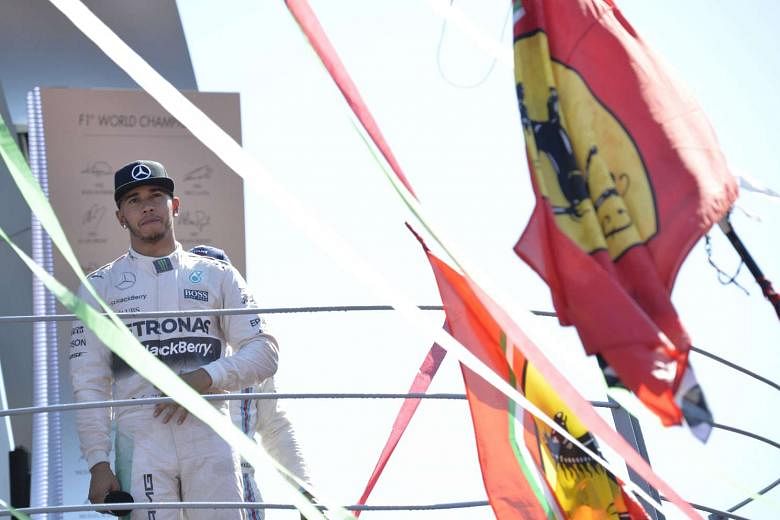So what was all the fuss about tyre pressures after the Italian GP on Sunday, which threatened to jeopardise Lewis Hamilton's utterly dominant 40th Grand Prix triumph?
Its root lay in the previous race, in Belgium, and the two dramatic tyre failures which struck Nico Rosberg in practice and Sebastian Vettel during the race. Following intensive investigation, the causes were put down to a combination of wear and an abnormally high level of on-track debris. These factors increased the average number of cuts across the range of tyres in a race from three to 63, so Pirelli mandated minimum tyre pressures prior to a race. They chose 19.5 pounds per square inch (psi) at Monza and a maximum temperature for the tyre blankets of 110 deg C.
After the five-minute signal on the grid prior to the start, FIA technical delegate Jo Bauer measured the pressures and tread temperatures in the left-hand rear tyres on the two Mercedes cars and the two Ferraris.
According to Bauer's report, the tread surface temperatures on all four cars were within Pirelli's specification. The minimum starting pressures on the Ferraris also complied. But Hamilton's left rear tyre was 0.3 psi below the specified minimum, and Rosberg's was 1.1 below.
The race was allowed to start just after two o'clock, but it took the FIA until 3.04pm to notify Mercedes that there would be an investigation into their discrepancies.
That prompted Hamilton's race engineer Peter Bonnington to ask him on the 47th of the 53 laps to start pushing harder to increase his advantage. At that point he was 22.5sec ahead of Vettel and admits that he couldn't for the life of him figure out why he was being asked to go faster at the very point when his rear tyres were finally beginning to lose their efficiency and upset the perfect balance his car had enjoyed all race.
But he responded, and opened the gap out to 25.042s by the flag. At that time Mercedes were worried that they might be given a 25sec penalty added to his race time, so he was just out of Vettel's reach if that were to happen. But there were also suggestions he could be excluded altogether.
Lowering tyre pressures can raise grip and performance but at the risk of overheating a tyre, causing it to fail. But Mercedes argued that 0.3 psi made no difference, either to performance or safety, and were adamant that they had obeyed all technical dictates. Technical chief Paddy Lowe made the point that the team had very specifically set the pressures according to the advice of their embedded Pirelli engineer.
The race stewards, who included Indianapolis 500 winner Danny Sullivan and former McLaren chief Teddy Mayer's son Tim, debated the issue in great depth for more than two and a half hours with Mercedes and Pirelli engineers.
They eventually determined that the tyres on both Mercedes complied with Pirelli's minimum pressures when they were fitted to the cars, but that the tyre warming blankets had been disconnected from their power source. Because of this, the pressures had thus dropped slightly as the temperatures fell.
Since the tyres conformed to the pressure requirement when they were fitted to the cars, the stewards ruled that no further action was required. They did, however, recommend that Pirelli and the teams hold further meetings to provide better guidance on measurement protocols.
Without question, it was the right decision, for no sport can retain its credibility for long if the paying public goes home believing it has witnessed one thing, only to find subsequently that the outcome had changed in their absence.
But the incident demonstrated that when it comes to tyres, Formula One is in an unsettled situation, especially after the drivers were muzzled over the weekend and told not to make negative public comments about Pirelli's wares.
Vettel, in particular, had been very outspoken after his near miss in Belgium. Had his right rear tyre exploded 200m sooner, when he was going through the ultra-fast Eau Rouge swerves, the outcome might have been much less benign.


